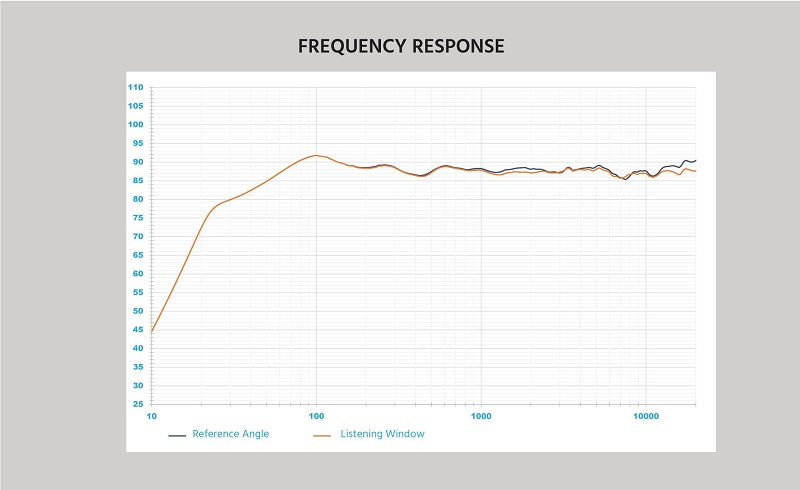The Case for Crossover Settings Higher Than 80Hz
The general wisdom is to set your crossover on your AV receiver to 80Hz. We give the same advice here. But, as we’ve said before, just because it is considered “best practice,” doesn’t mean it is right for everyone. There are times when setting your crossover higher than 80Hz. When, you ask? Let’s discuss!
How Do You Know When You Should Set Your Crossover Higher than 80Hz?
We’ve started this article assuming that you’ve already identified that you have a problem around your crossover point. But how would you know that you have an issue? The easiest way is to play sweeps through your system (we talk about sweeps here). By playing sweeps, you’ll hear where your speakers cut out and your subwoofer(s) begin to play. If that area sounds overly loud or soft, then you have a problem. You can also, if you are more technologically inclined, use REW (Room EQ Wizard) and a microphone to definitively identify the problem frequencies.
You may also realize you have a problem when your speakers start making funny noises. Not funny “Ha Ha,” but funny “Oh my God I think I broke something.” Amplifier clipping, speakers bottoming out, and other sounds can have you jumping for the remote to turn your system down. Again, you would then turn to sweeps and slowly increase the volume until you recreated the offending sound.

It’s All About Your Room
The main reason you’d want to set your crossover higher than 80Hz is because of how the bass interacts with your room. Depending on the dimensions, you may find that you have either dips or peaks in your bass response right around 80Hz. Crossover settings aren’t a brick wall at the 80Hz point. Your subwoofers play higher than 80Hz and your speakers play lower. If you are experiencing issues around the crossover area, changing the 80Hz setting to something higher can push more of the sound into your subwoofers and out of your speakers.
The advantage is that your subwoofers are placed more optimally for bass in your room. Your speakers are placed so that they create convincing surround sound. By having your subwoofers play the bass in the problematic region, you can potentially eliminate the issues. But there are other benefits.
Speaker Manufacturers Sometimes Lie (or Exaggerate)
One problem that you may be experiencing, without knowing it, is that your speakers are running out of output. Maybe you have small speakers placed too far from you in a large room. Or it could be that the speaker manufacturer fudged the numbers a bit when they listed their speaker’s -3dB point. Either way, your speakers are running out of output near or at the 80Hz crossover that you set.
Since the crossover assumes that your speakers will not only be able to hit the point but also play a little lower, your dips in response could just be your speakers running out of output. By adjusting the crossover setting to something higher, your speakers no longer have to play as low. This alone may very well smooth out your response.
One thing to remember is that very rarely will manufacturers rate their speakers more conservatively. They may say that they can play lower than you’ll experience, but they’ll rarely claim they have less bass. If your AV receiver, through the auto-setup routine, sets the crossover to a speaker much higher than its rating, that’s just fine. You can adjust it down, but it won’t hurt the speaker to leave it where it is.

Additional Benefits
If you are the type of person that likes to play your system very loud (louder than reference level), adjusting your crossover settings higher than 80Hz can have other benefits. First, you reduce the risk of damaging your speakers by pushing them too hard. This can damage your woofers and tweeters in multiple ways. In the case of bass, you could potentially bottom out your woofers as your speakers try to create louder output. By using a crossover set higher than 80Hz, that low bass moves into your subwoofers protecting your speakers.
A crossover set higher than 80Hz also protects your amplifiers. If you are using your AV receiver to amplify all of your speakers (as most people do), they usually have more than enough power. When they run out of power, however, your risk clipping your amplifier. This can damage both the amplifier and the speaker. By setting your crossover to a higher level, more of the bass will be played by your subwoofers. Since your subwoofers have their own, very capable, amplifiers, much of the load will be taken off your AV receiver’s amps.
Take Away
One thing to remember is that there is literally no harm in trying a crossover that is set higher than 80Hz. There is no way to damage a speaker or subwoofer (that we can think of) by setting your crossover higher. Trying it out costs nothing, risks nothing, and may get you better bass response in your room. Do you set your crossover higher than 80Hz? Let us know why in the comments below!



I have 2 SVS subwoofer that put out awesome bass, so I have my crossover set to 120 and the bass sounds great. I try 80 occasionally and always go back to 120.
Hello sir, I just did auto speaker setting. I got front speaker big and surround speaker big and dolby atmos got small. crossover frequency 40hz. achieved. Is this correct? near me
(all speaker polk audio), av receiver marantz sr6015 emotiva xpa-3 gen3 power amp
Polk audio-Tower speaker RTI A9
Surround Speaker RTI A1
Center speaker CSI A6
Dolby atmos speaker RC 80I
Subwoofer-svs pb 2k pro
Is. Is the result obtained from auto calibration correct? Or would you suggest making some changes in it?
I would make some changes. Check out this article for specifics.